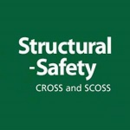Timber framed buildings and fire

|
Contents |
[edit] Introduction
There have been a number of severe fires in timber framed buildings during construction which has put that form of construction under the spotlight for designers while carrying out their initial feasibility studies into new projects. The cause of these fires has been noted to be almost always caused by arson and have occurred on timber-frame buildings where the structural frame elements have not been protected by the in-service fire protection finishes. In September 2014, there was a severe fire that destroyed a laboratory building under construction at the University of Nottingham. The cause has been put down to an electrical fault and because no fire doors or other barriers had yet been constructed, the fire spread rapidly.
A timber frame has panelised structural walls and floors using small-section timber studs and board products for the walls. The term does not refer to timber post and beam structures or timber-engineered structural frames.
In the timber-frame industry, ‘designer’ is a term that refers to the persons who produce the fabrication drawings. In this article, ‘designer’ is given the definition used by the CDM Regulations, i.e. it is any party which makes decisions regarding the selection, type, layout, compartmentation or other aspect of the timber frame, which may have a bearing on fire safety during construction. These decisions may be made by more than one party and at various stages of the project.
During a designer’s initial risk analysis, fire during construction must be taken into account as an influencing factor in the choice of timber-frame system, and as a possible debit compared with the positives that timber provides as a construction method. Those risks will be site specific and so will need to be closely assessed on a project by project basis.
It has long been acknowledged that a timber framed building is safe for service when completed due to the fire protection given to the frame by the boarding and fire stops installed during the construction activities following frame erection. However, some fires have shown that prior to completion, for exposed timber frame elements, there are very real risks of the highest severity, albeit with a low probability. It is these high severity/low probability risks that specifically require careful management.
In practical terms, HSE now expects:
- An assessment of the particular site and its constraints when the method of construction is being considered.
- For timber-framed structures, assessment can be undertaken using Structural Timber Association’s (STA’s) ‘Design guide to separating distances during construction’.
- The assessment should identify that where there is insufficient separation distance to allow a Category A (Standard open panel timber frame) structure, the appropriate level of Category B (Reduced fire-spread frames), or C ( Fire spread-resistant frames) to match the site constraints (unless an alternative fire-engineered solution is developed by a competent person) should be recommended.
- The appropriate category frame should be specified to the manufacturers.
- Timber frame manufacturers, including non-STA members, have a significant role to play in ensuring appropriate specification and procurement of frames. Manufacturers should be advising their customers on the guidance and requirements. Use of the STA audit checklist may assist manufacturers in compiling records to demonstrate the steps they have taken to discharge their obligations under CDM Regulation 11 and record who has made specific decisions.
- Any specific information and instructions that must be followed to guarantee the specified category or approved solution to be achieved on site must be passed to the principal contractor.
- The principal contractor must adhere to the conditions required to achieve the specified category of structure.
The principal contractor must devise and apply appropriate fire precautions during the build, including control of hot works, provision of fire warning and extinguishing systems, provision of means of escape and other relevant issues.
Advice for designers can be found in 'Fire Safety in Construction HSG 168' published by HSE.
[edit] Design actions
Although responsibility for safety on site falls to the contractor, the designer can, and is, required to play a role at the design stage. In the course of discharging actions under Construction (Design and Management) Regulations 2015, Regulation 11 Duties of a principal designer in relation to health and safety at the pre-construction phase, designers should consider the following:
[edit] Eliminating hazards
Consideration must be given to determine whether this is the appropriate form of construction having regard to adjacent buildings, their occupancy, and how they might be affected should a fire occur. This should consider recent experiences in terms of ignition of adjacent property through radiated heat and, as a consequence of the heat, the means of escape from these adjacent structures should the subject building catch fire.
These scenarios are ‘major hazards’ with multiple fatality potential and must receive commensurate consideration. In some cases, it may be concluded that an alternative choice of material is necessary.
[edit] Mitigating risk
If, having considered the above, a timber-framed solution is chosen, the following should be part of the risk mitigation exercise at the planning and design stage:
- Fire-engineered solutions must give consideration to the construction phase in addition to the in-use phase. The assumptions should be made known to the contractor since they often only relate to the final condition thereby leaving residual risks during the construction phase.
- Anticipated partial occupancy should be considered to ensure that a sensible construction sequence can be achieved while maintaining fire safety. The assumptions should be made known to the contractor.
- In refurbishment projects, build sequences, e.g removal of fire stops and doors, may need to be specified in order to maintain a minimum level of fire safety.
- Limitations of the fire service, for example in terms of equipment reach.
- The likelihood of spread of a construction-phase fire to adjacent buildings based on recent real fire experiences.
- The use of additional protective measures, e.g fire retardants, intumescents, fire compartmentation, etc. solely to cater for the build phase.
- Consideration as to the site security that can reasonably be assumed to be in place balanced against the knowledge of the area in which the building is being constructed.
- Checking the design against the STA’s guidance to make sure the advice is not compromised and, where possible, is assisted.
Specific projects may require other items to be considered. A possible solution might be treating the timber in advance for fire protection. Treatments could have the additional benefit of reducing the potential risks which occur during later modifications.
The suggestions made above should be considered within the framework of ‘eliminating hazards and mitigating any remaining risk’ (i.e the ERIC approach2) [Eliminate, Reduce, Isolate, Control]. There is benefit in discussing this subject overall with the client and HSG 168 gives useful guidance in this respect.
[edit] Passing-on information for the construction process
As in all forms of construction, final completion compliance relies on compartmentation and the (varying) fire-resisting properties of various walls. It is incumbent on the designers to identify for the contractor being considered any special requirements that a reasonable contractor experienced in the field of construction may not be aware of, so that:
- A building can be sequentially constructed in a form to ensure the structure is safe in itself.
- Dependent on the scale of the project, that there are adequate and optional routes for egress for personnel working on the project. Consideration of the routes utilising temporary works, e.g scaffolding and usable parts of the building should be considered.
- During construction it does not generate an undue risk for adjacent properties. Recent fires have shown this to be an important aspect.
Engineers are used to providing statements and loadings for the temporary condition of structural elements to ensure stability is maintained during the construction process. Designers should also get used to providing data to contractors on fire safety to highlight the residual risks present until the frame is encapsulated.
[edit] Multiple designers
On many projects, there will be more than one party inputting into the design of a timber-framed structure. Each individual designer has a responsibility to:
- Consider the consequences of their decisions on the work of other designers (maybe not appointed at that time), and on the build sequence as noted above.
- Co-ordinate their design with other designers.
- Communicate and co-operate with other parties as necessary.
- Pass-on information relating to their design to other designers and others.
[edit] The building control process
As with all forms of construction, it is necessary to distinguish between the aims of the building control process and other legislation.
In broad terms, the building regulations are not concerned with the issue of safety during the construction phase unless these will directly lead to non-compliance in the completed state. It is also noted that third-party approvals, such as NHBC timber-frame certification, do not refer to the construction process. However, health and safety legislation is concerned with safety during the construction phase (and over the life of the structure) and places obligations on all parties.
In Scotland, the Certifier of Design will have a responsibility to ensure that the building design overall is compliant with the building regulations for Scotland. No such equivalent formal oversight occurs in England and Wales: in neither case is there a responsibility under building regulations for ensuring construction phase safety.
This topic paper was issued by SCOSS in March 2015. You can view the original here.
[edit] Related articles on Designing Buildings
- Advantages and disadvantages of timber frame buildings.
- Aurora Log Homes.
- Balloon framing.
- Delivering sustainable low energy housing with softwood timber frame.
- Fire.
- Fire protection engineering.
- Health and safety executive.
- HSG 168 Fire safety in construction.
- Interview with Structural Timber Association.
- Jetty.
- Joint fire code.
- Sacrificial timber.
- The Regulatory Reform (Fire Safety) Order 2005.
- Timber.
- Timber engineered structural frames.
- Timber frame.
- Timber post and beam construction.
- Timber preservation.
- Torre Windsor office building fire.
Quick links
[edit] Legislation and standards
Fire Safety (England) Regulations 2022
Regulatory Reform (Fire Safety) Order 2005
Secondary legislation linked to the Building Safety Act
Building safety in Northern Ireland
[edit] Dutyholders and competencies
BSI Built Environment Competence Standards
Competence standards (PAS 8671, 8672, 8673)
Industry Competence Steering Group
[edit] Regulators
National Regulator of Construction Products
[edit] Fire safety
Independent Grenfell Tower Inquiry
[edit] Other pages
Building Safety Wiki is brought to you courtesy of:





